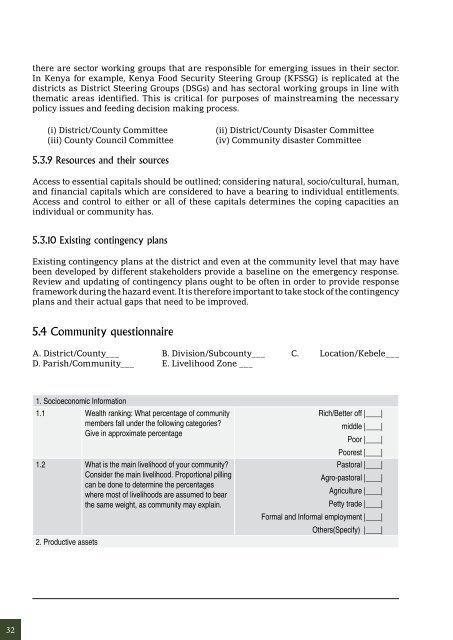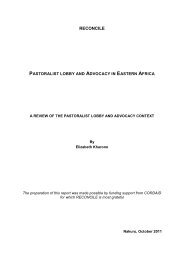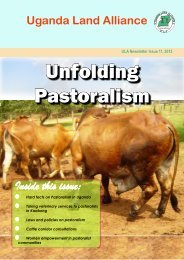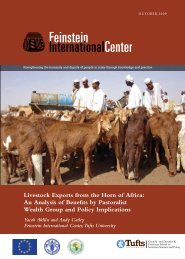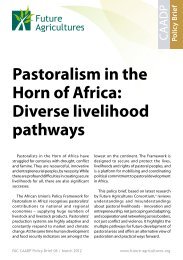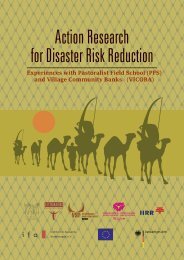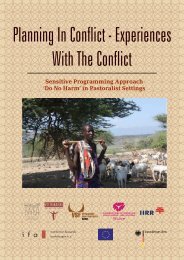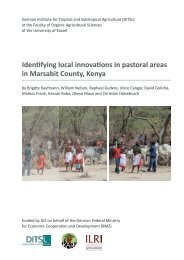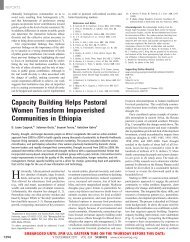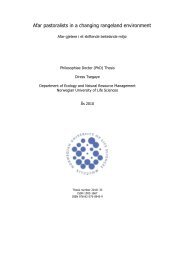Drought Contingency Planning with Pastoral Communities - celep
Drought Contingency Planning with Pastoral Communities - celep
Drought Contingency Planning with Pastoral Communities - celep
Create successful ePaper yourself
Turn your PDF publications into a flip-book with our unique Google optimized e-Paper software.
there are sector working groups that are responsible for emerging issues in their sector.<br />
In Kenya for example, Kenya Food Security Steering Group (KFSSG) is replicated at the<br />
districts as District Steering Groups (DSGs) and has sectoral working groups in line <strong>with</strong><br />
thematic areas identified. This is critical for purposes of mainstreaming the necessary<br />
policy issues and feeding decision making process.<br />
(i) District/County Committee<br />
(iii) County Council Committee<br />
(ii) District/County Disaster Committee<br />
(iv) Community disaster Committee<br />
5.3.9 Resources and their sources<br />
Access to essential capitals should be outlined; considering natural, socio/cultural, human,<br />
and financial capitals which are considered to have a bearing to individual entitlements.<br />
Access and control to either or all of these capitals determines the coping capacities an<br />
individual or community has.<br />
5.3.10 Existing contingency plans<br />
Existing contingency plans at the district and even at the community level that may have<br />
been developed by different stakeholders provide a baseline on the emergency response.<br />
Review and updating of contingency plans ought to be often in order to provide response<br />
framework during the hazard event. It is therefore important to take stock of the contingency<br />
plans and their actual gaps that need to be improved.<br />
5.4 Community questionnaire<br />
A. District/County___ B. Division/Subcounty___ C. Location/Kebele___<br />
D. Parish/Community___ E. Livelihood Zone ___<br />
1. Socioeconomic Information<br />
1.1 Wealth ranking: What percentage of community<br />
members fall under the following categories<br />
Give in approximate percentage<br />
1.2 What is the main livelihood of your community<br />
Consider the main livelihood. Proportional pilling<br />
can be done to determine the percentages<br />
where most of livelihoods are assumed to bear<br />
the same weight, as community may explain.<br />
2. Productive assets<br />
Rich/Better off |____|<br />
middle |____|<br />
Poor |____|<br />
Poorest |____|<br />
<strong>Pastoral</strong> |____|<br />
Agro-pastoral |____|<br />
Agriculture |____|<br />
Petty trade |____|<br />
Formal and Informal employment |____|<br />
Others(Specify) |____|<br />
32


